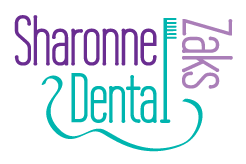fillings
There are several materials to choose between when putting back the missing parts of teeth. Common reasons for needing fillings (also known as ‘restorations’) are decay, breakage,wear and replacing an existing filling. Each material has a different profile of advantages and disadvantages, takes a different amount of time to place and thus has a different cost. There are direct materials used in the surgery and stronger indirect restorations made with the assistance of an external laboratory.
The direct filling materials available are composite resin (tooth coloured material made of resin and filler particles), amalgam (metallic silver coloured material) and GIC (tooth coloured and made of glass particles in a matrix).
I use all materials in different situations depending on what suits best. Different surfaces and locations of teeth have different requirements. In order to allow an informed decision I always go through the options, pros and cons and logistics with you and make a recommendation before proceeding. Here is a summary of the pros and cons of the materials:
Composite resin:
Advantages: Excellent aesthetics, good wear resistance, conserves tooth as minimal drilling required, flexible so wont promote cracking of the tooth.
Disadvantages: Will leak at the borders over time, allowing bacteria to get in underneath, risking recurrent decay. Generally requires more frequent maintenance and repair than amalgam. Ideal in a lower decay risk mouth with good oral hygiene; degenerates faster in presence of plaque and acid. Takes longer to place than amalgam.
Amalgam:
Advantages: Extremely durable and long lasting, very wear resistant. Doesn’t leak over time; excellent seal at borders. Performs better than composite in high decay risk mouths and handles plaque better than composite.
Disadvantages: Is slightly more rigid than the tooth so can increase the risk of cracks developing in teeth, usually after many years and with a heavy bite. This contrasts composite which is flexible. Looks grey and can create a grey shadow through the tooth.
GIC:
Advantages: Excellent seal; ideal if gums inflamed and not ready for a permanent filling; often used as an interim material eg to monitor a tooth or between visits during root canal treatment. The material actively helps to prevent decay returning to the area. If placed out of all direct chewing load it can work well as the final restoration eg near the gumline.
Disadvantages: Less resistant to wear lasting less well than the other materials, especially if under direct biting load. Appearance not as good as composite.
